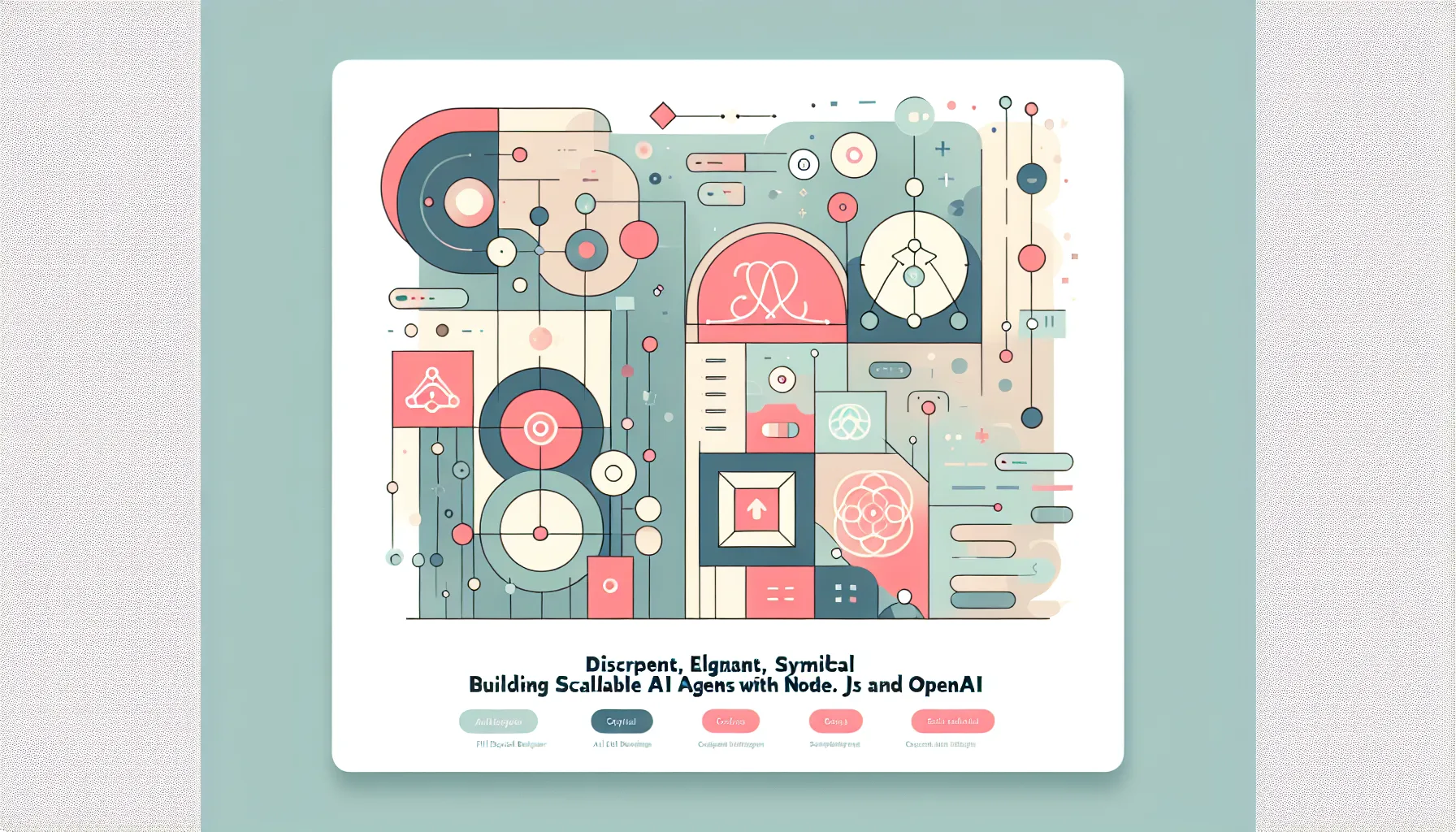Building Scalable AI Agents with Node.js and OpenAI
Building Scalable AI Agents with Node.js and OpenAI

Building Scalable AI Agents with Node.js and OpenAI
Artificial Intelligence (AI) agents are transforming the way users interact with software systems, offering capabilities that go beyond static user interfaces. These agents can understand user inputs, carry out tasks autonomously, and even adapt based on usage patterns. In this blog post, we’ll dive into how to build a scalable AI agent using Node.js, leveraging the OpenAI API, and incorporating good architectural practices to handle real-world use cases.
Why Build AI Agents?
AI agents can be utilized across numerous applications:
- Customer service chatbots
- Automated research assistants
- Content creation tools
- Voice-controlled applications
- Task automation bots
They combine the power of natural language understanding with contextual awareness, enabling systems to respond more human-like and intelligently.
Why Node.js?
Node.js is an excellent choice for building AI agents for several reasons:
- Asynchronous I/O: Great for real-time applications
- Scalability: Easily scales with cloud-native environments
- Large ecosystem: Access to thousands of npm packages
- Vibrant community: Strong support and documentation
We’ll use Node.js to power the backend logic and integrate with the OpenAI API to provide the intelligence.
Prerequisites
Before we start, ensure you have the following installed:
- Node.js (v14 or higher)
- npm or yarn
- An OpenAI API Key (link)
Create a new Node.js app:
mkdir ai-agent-node cd ai-agent-node npm init -y
Install dependencies:
npm install axios dotenv express
Setting Up the Environment
Create a .env file to securely store your API key:
OPENAI_API_KEY=your_openai_api_key
Create a config.js file to load the environment variable:
// config.js
require('dotenv').config();
module.exports = {
openaiKey: process.env.OPENAI_API_KEY,
};
Creating an OpenAI API Client
We'll use Axios to call OpenAI's completions API:
// openaiClient.js
const axios = require('axios');
const { openaiKey } = require('./config');
const openaiClient = async (prompt) => {
try {
const response = await axios.post(
'https://api.openai.com/v1/chat/completions',
{
model: 'gpt-3.5-turbo',
messages: [{ role: 'user', content: prompt }],
temperature: 0.7,
},
{
headers: {
'Authorization': `Bearer ${openaiKey}`,
'Content-Type': 'application/json',
},
}
);
return response.data.choices[0].message.content;
} catch (error) {
console.error('Error querying OpenAI API:', error);
return 'Something went wrong...';
}
};
module.exports = openaiClient;
Setting Up the Express Server
We’ll create a simple Express server to handle user prompts.
// server.js
const express = require('express');
const openaiClient = require('./openaiClient');
const app = express();
const PORT = process.env.PORT || 3000;
app.use(express.json());
app.post('/ask', async (req, res) => {
const { prompt } = req.body;
if (!prompt) {
return res.status(400).json({ error: 'Prompt is required' });
}
const aiResponse = await openaiClient(prompt);
res.json({ response: aiResponse });
});
app.listen(PORT, () => {
console.log(`Server running on http://localhost:${PORT}`);
});
Now run the server:
node server.js
Send a POST request using a tool like Postman or curl:
curl -X POST http://localhost:3000/ask \
-H "Content-Type: application/json" \
-d '{"prompt": "What are three benefits of using AI agents?"}'
You should receive a response from the AI with a relevant answer.
Adding Context Switching
AI agents become more powerful with memory or session capabilities. A simple way to achieve this is by maintaining a conversation history per user.
Extend the prompt like so:
let conversationHistory = [];
app.post('/ask', async (req, res) => {
const { prompt } = req.body;
if (!prompt) {
return res.status(400).json({ error: 'Prompt is required' });
}
// Add prompt to history
conversationHistory.push({ role: 'user', content: prompt });
const response = await axios.post(
'https://api.openai.com/v1/chat/completions',
{
model: 'gpt-3.5-turbo',
messages: conversationHistory,
},
{
headers: {
'Authorization': `Bearer ${openaiKey}`,
'Content-Type': 'application/json',
},
}
);
const aiMessage = response.data.choices[0].message;
conversationHistory.push(aiMessage);
res.json({ response: aiMessage.content });
});
Note: In production, you'd need per-user session handling and persistent database storage for conversation context!
Optimizing for Scalability
- Use Redis or MongoDB to persist conversations
- Add rate limiting (e.g., express-rate-limit)
- Set up logging with Winston or Sentry
- Deploy using serverless platforms or containers (e.g., AWS Lambda, Docker)
- Implement graceful error handling and retries
Future Enhancements
- Add voice input/output (via Web Speech API)
- Integrate with messaging platforms (e.g., Slack, Discord)
- Provide a UI with React or Vue
- Extend agent memory with vector embeddings using tools like Pinecone or Supabase
Conclusion
In this tutorial, we walked through how to build a functional and scalable AI agent using Node.js and OpenAI's GPT model. While this is a simplified example, it forms the groundwork for powerful applications that can interact naturally with users, automate tasks, and deliver personalized experiences.
Whether you're building customer service bots, research assistants, or interactive education tools, AI agents are the future—and with Node.js, that future is highly accessible.
Happy coding! 🚀
Resources
If this tutorial helped you, consider subscribing for more posts on AI agents, JavaScript, and fullstack development!
💡 If you need help developing AI-powered chatbot solutions like the one described here, we offer such services — check out this link.